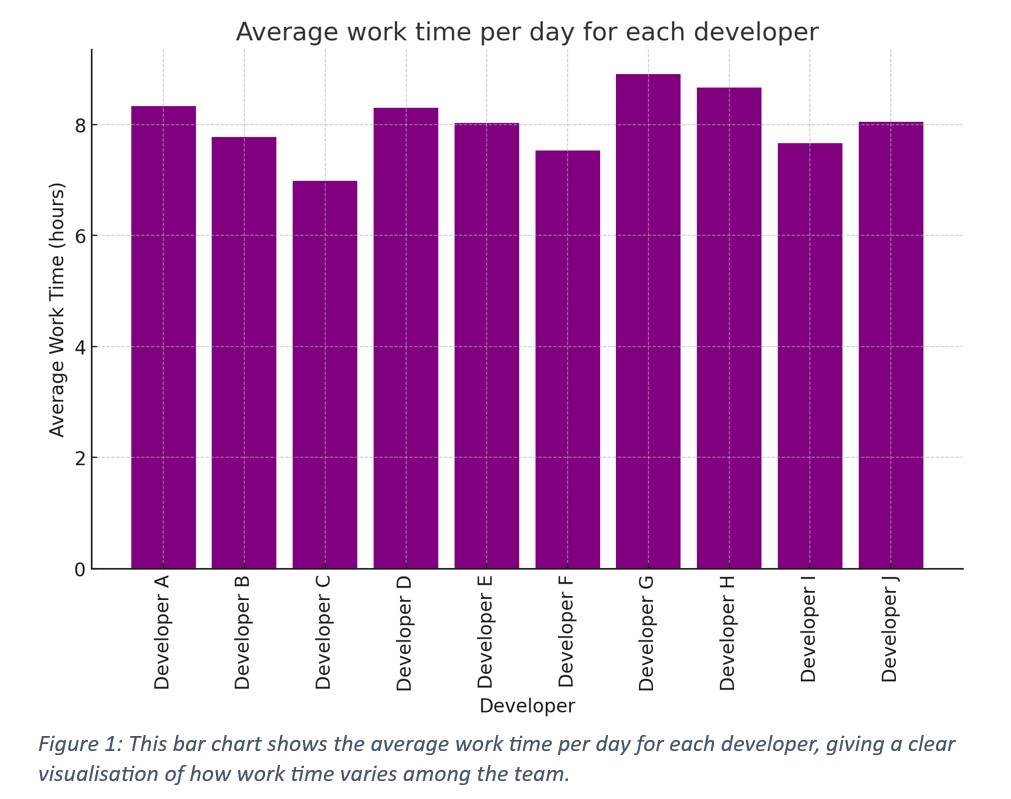- About
Getting to know us
- Services
- Managed Services
- Application Services
- Cloud Services
- Data Science
- Consulting Services
- Technology Solutions
Managed Services
Application Services
Data Science
Consulting Services
Technology Solutions
- Industries
- Resources
Resources
- Contact
- Contact us
Unleashing Your Inner Data Scientist with ChatGPT
Contents
If there's one thing any business leader knows, it's the importance of data. In our daily operations, we generate vast amounts of it, from time tracking to sales records. But how often do we pause and delve into this data to glean meaningful insights? As important as it is, data analysis can feel daunting, particularly if you don't have a data scientist on speed dial. But what if I told you that you could become your own data scientist with a little help from AI? Let's discover how with ChatGPT.
A Problem to Solve
The first step is to have a problem to solve. In this example case, our problem revolves around time-tracking data from developers. We want to understand how work time varies for each developer. This could help identify workload imbalances and optimise project management.
Our dataset is a time log that records how much time each developer spends on different tasks. Each entry in the log contains information like the date, the developer's name, the client and project associated with the task, a description of the task, the duration of the task, and whether the time spent on the task is billable.
Here's a small, anonymised sample of what the data might look like:
A Data Scientist to Do the Job
This is where ChatGPT comes in. ChatGPT is a language model that can not only chat but also interpret code, making it an ideal helper for your data analysis needs. It's like having your own personal data scientist, ready to crunch numbers and generate insights at a moment's notice.
Harnessing the Power of ChatGPT's Code Interpreter
As part of its extensive capabilities, ChatGPT also includes a powerful code interpreter feature. This feature allows the model to generate, interpret, and execute Python code, making it an ideal companion for data analysis tasks. ChatGPT can guide you through the process and execute the code in real-time, whether you're performing simple data manipulations or complex statistical analyses.
Using ChatGPT's code interpreter involves the following steps:
Interacting with ChatGPT
After uploading your data and formulating your question, you can engage with ChatGPT by describing your dataset and your question in the prompt. For instance, you might say, "I have a dataset of time-tracking logs for different developers. Each log entry has the date, the developer's name, the client and project associated with the task, a description of the task, the duration of the task, and whether the time spent on the task is billable. I want to know how the average work time per day varies for each developer. Can you help me analyse this data?"
Generating Code
Based on your question, ChatGPT will generate Python code to load your data, perform the necessary calculations, and create visualisations. This code is developed in real-time and is presented conversationally, enabling you to understand and follow the process.
Executing Code
One of the most exciting features of ChatGPT is its ability to execute the generated Python code. The code interpreter can run the code and display the results within the conversation, allowing you to see the results instantly and make real-time adjustments or ask follow-up questions based on the output.
Iterating the Process
Data analysis is an iterative process. After seeing the results, you may have new questions, or you may want to explore the data from a different angle. You can simply continue the conversation with ChatGPT, asking new questions or requesting further analyses. The code interpreter will continue to generate and execute new code based on your prompts.
Here's an example of how ChatGPT's code interpreter can be used to analyse the average work time per day for each developer and the code and visualisation that it will produce:
# Calculate the average work time per day for each developer
avg_work_time_per_day = data.groupby(['Developer',
data['Date'].dt.date])['Duration'].sum().groupby('Developer').mean()
# Plotting
plt.figure(figsize=(10, 6))
plt.bar(avg_work_time_per_day.index, avg_work_time_per_day.values, color='purple')
plt.title('Average work time per day for each developer')
plt.xlabel('Developer')
plt.ylabel('Average Work Time (hours)')
plt.xticks(rotation=90)
plt.show
By using ChatGPT's code interpreter, you can seamlessly integrate data analysis into your conversation. It's like having a conversation with a data scientist who not only provides insights but also shows their work, allowing you to learn and refine your own data analysis skills.
Remember, the key to gaining insights is asking the right questions. With ChatGPT's code interpreter, you have a powerful tool at your disposal. So go ahead, ask your questions, and let ChatGPT help you uncover the insights hidden in your data.
If you would like any Data Science or Development support, please Contact Us or book a meeting...

.png?width=250&name=stonewater-logo%20(1).png)



